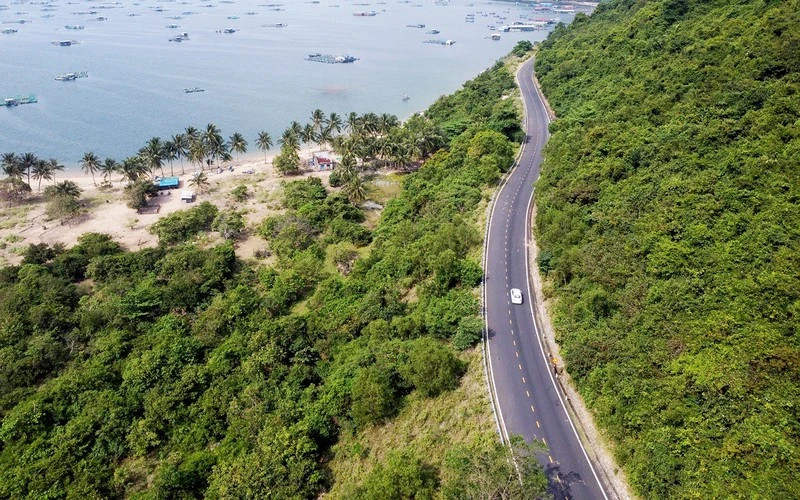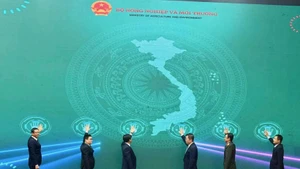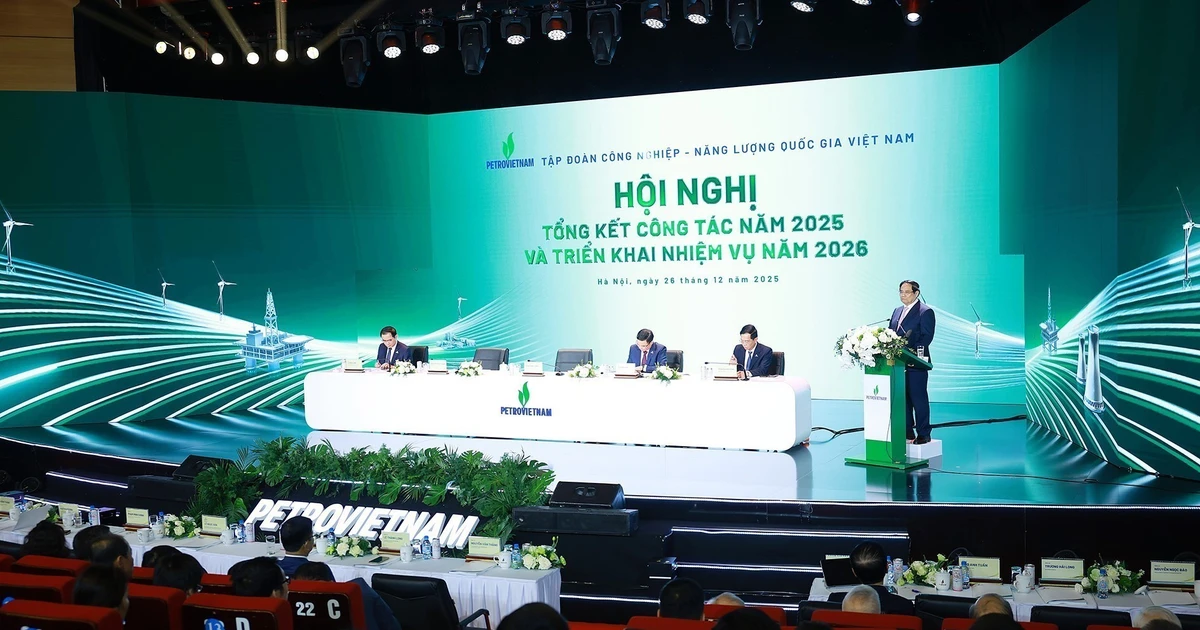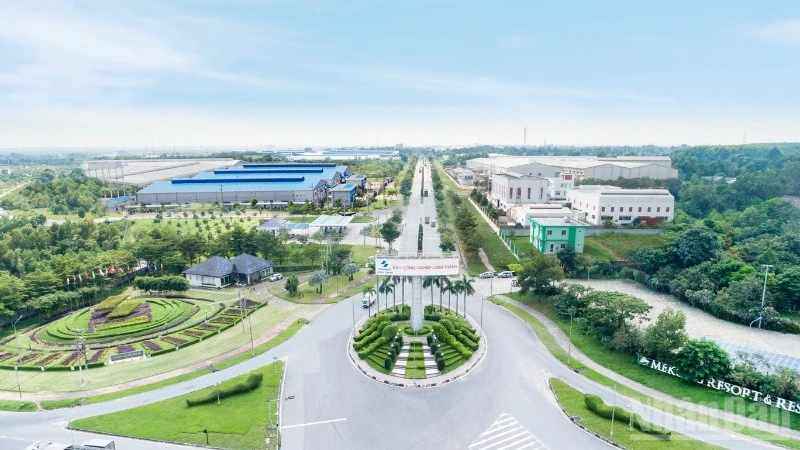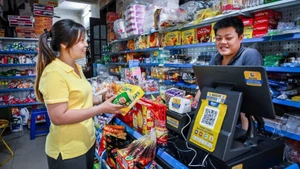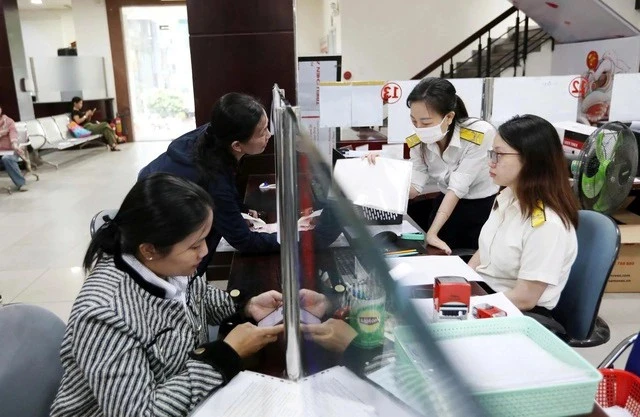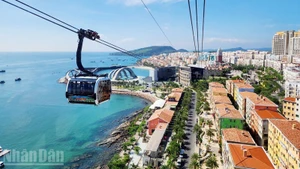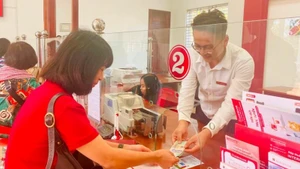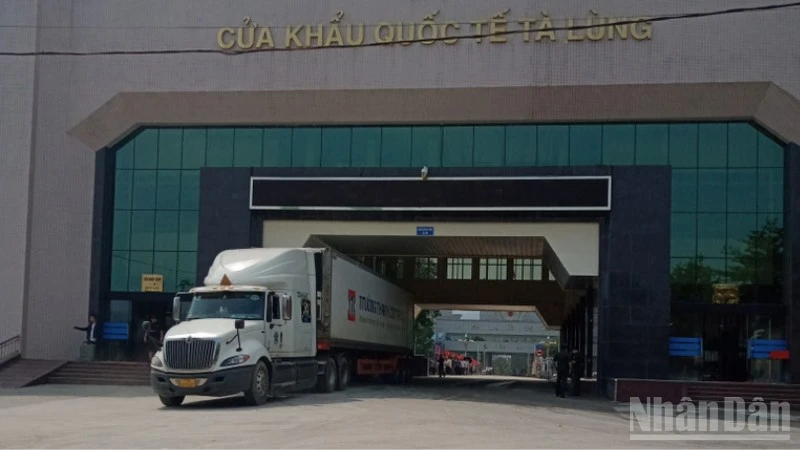In particular, developing mountainous transport is identified by the province as one of the breakthrough solutions to promote economic development in mountainous areas and ethnic minority areas.
From the main traffic route
Phu Yen is in the harvest season of agricultural products such as cassava, sugarcane, beans and exploiting planted forest areas. Tens of thousands of hectares of raw material areas for these crops are mostly concentrated in mountainous districts such as Song Hinh, Son Hoa, Dong Xuan, etc.
If in the past, at this time traffic was often disrupted, transportation was extremely difficult due to muddy and damaged roads after the rainy season, then in the last days of 2024, on the roads, convoys of trucks are still rushing to bring products downstream, supplying processing factories conveniently and safely.
The 115 km long National Highway 19C passes through 15 communes of three mountainous districts of Phu Yen, connecting Van Canh district (Binh Dinh) in the north and M'rac district (Dak Lak) in the south, intersecting with National Highway 25 to the west connecting to Gia Lai province, which is the main traffic route of the mountainous area of Phu Yen, and has been highly effective in recent times.
More than 10 years ago, despite the difficult conditions in terms of resources, the leaders of Phu Yen province with their strategic vision saw the potential and decided to invest more than 600 billion VND to build this route.
Initially, the project was called the Phu Yen Western Traffic Axis. When put into operation and use, the route conveniently connected and effectively communicated between the mountainous districts that were still difficult and isolated in the province with neighboring localities. After that, the locality proposed and the Ministry of Transport decided to upgrade the Phu Yen Western Traffic Axis to National Highway 19C.
La Lan Tien, in Hoa Ngai village, Son Dinh commune, Son Hoa district, has 7 hectares of cultivated land, specialising in growing acacia, cassava and sugarcane. During the harvest season, trucks can easily come to the site to purchase and transport. His family opened a grocery store next to the road to sell essential goods to the people in the village. Thanks to that, the family's income is increasingly stable, Tien has achieved the title of good farmer and businessman of Son Hoa district.
Tien confided: “In the past, my family worked on the fields, when harvesting agricultural products, we had to use rudimentary means such as ox carts to pull them home before being able to sell them. Now, the district and provincial authorities are interested in investing in opening roads to production areas, making it easier for farmers to cultivate, and factory vehicles can also get to the transportation site, and people's income is many times higher...”.
Vice Chairman of Dong Xuan District People’s Committee Tran Quoc Huy said that in recent years, the district's traffic has been focused on investment, connecting the local traffic network with the province’s key traffic axes, linking production areas, residential areas, 100% of communes have car roads to the commune centers. The total length of the district’s roads is currently nearly 226 km, with an average road density of 0.22 km/km2.
In addition to National Highway 19C, which is about 21 km long running along the west, there are four provincial roads including DT641, DT642, DT644 and DT647 passing through the district, all of which connect to National Highway 19C, with a total length of 68.9 km passing through the district. All roads are solidly built, meeting the needs of all types of vehicles...
To the concretisation programme
In order to complete the rural road network in the communes in the mountainous areas to ensure smoothness, meet the travel needs and serve the production of the people, since 2016, the People’s Council of Phu Yen province has issued a Resolution to implement the program of concreting rural roads in the communes in the mountainous areas.
As a result, the whole province has built more than 482.5 km (an increase of 83.5 km), reaching 120.8% of the plan, contributing to creating conditions for districts to complete the traffic criteria under the National Criteria for New Rural Communes. Thanks to that, many places have soon met the standards for building new rural areas and advanced new rural areas.
In the 2021-2025 period, Phu Yen aims to strive for the average income of ethnic minorities to increase more than twice compared to 2020; the poverty rate will decrease by more than 3% each year, the whole region strives for 100% of communes, villages, and hamlets to have asphalt roads for cars to the commune center; fundamentally solve the shortage of residential land and production land for the people,...
Pham Dai Duong, member of the Party Central Committee, Secretary of the Provincial Party Committee, Head of the National Assembly Delegation of Phu Yen province, said that in order to complete and exceed the above goals, the province determined that the important solution is to continue mobilising resources to invest in developing mountainous transport infrastructure.
Standing Vice Chairman of the Provincial People’s Committee Le Tan Ho affirmed that Phu Yen Province pays special attention to the construction of mountainous traffic infrastructure. The program of concreting rural roads in communes in mountainous areas is a correct policy in mobilizing people’s strength in the construction of new rural areas; attracting social resources in building traffic roads with the motto "The State and the people work together".
In Song Hinh district, in addition to the traffic routes invested by the Central and the province in the past 5 years, the district also mobilized more than 99 billion VND to build and concretize 245 km of rural roads to ethnic minority villages.
According to Chairman of the District People’s Committee Dinh Ngoc Dan, the locality identified traffic as a breakthrough in infrastructure construction to support local economic development. In particular, building and developing the transportation system to remote areas is a demonstration of the Party and State's concern for improving people’s lives.
For example, in the particularly difficult commune of Ea Lam, after the district invested in expanding and concreting traffic routes, combined with the construction of irrigation works, the commune has had the conditions to exploit fields that have long been left fallow, and to cultivate 243 hectares of sugarcane.
Nay Y Le, Chairman of the People’s Committee of Ea Lam commune, was moved to say that in recent times, the State has paid attention to investing in road opening and irrigation, which has helped facilitate transportation, and the sugar factory has been invested in, so people have boldly expanded the sugarcane growing area.
Income from sugarcane is higher than other crops, the lives of farmers in the commune are much better, the rate of poor households has decreased rapidly, contributing to stabilising the political security situation, social order and safety in the area.
